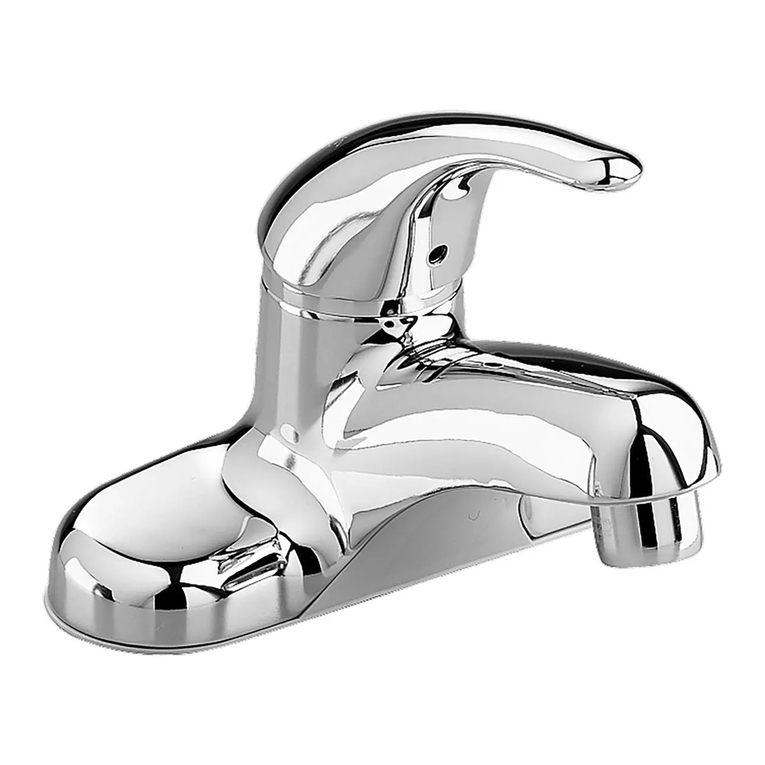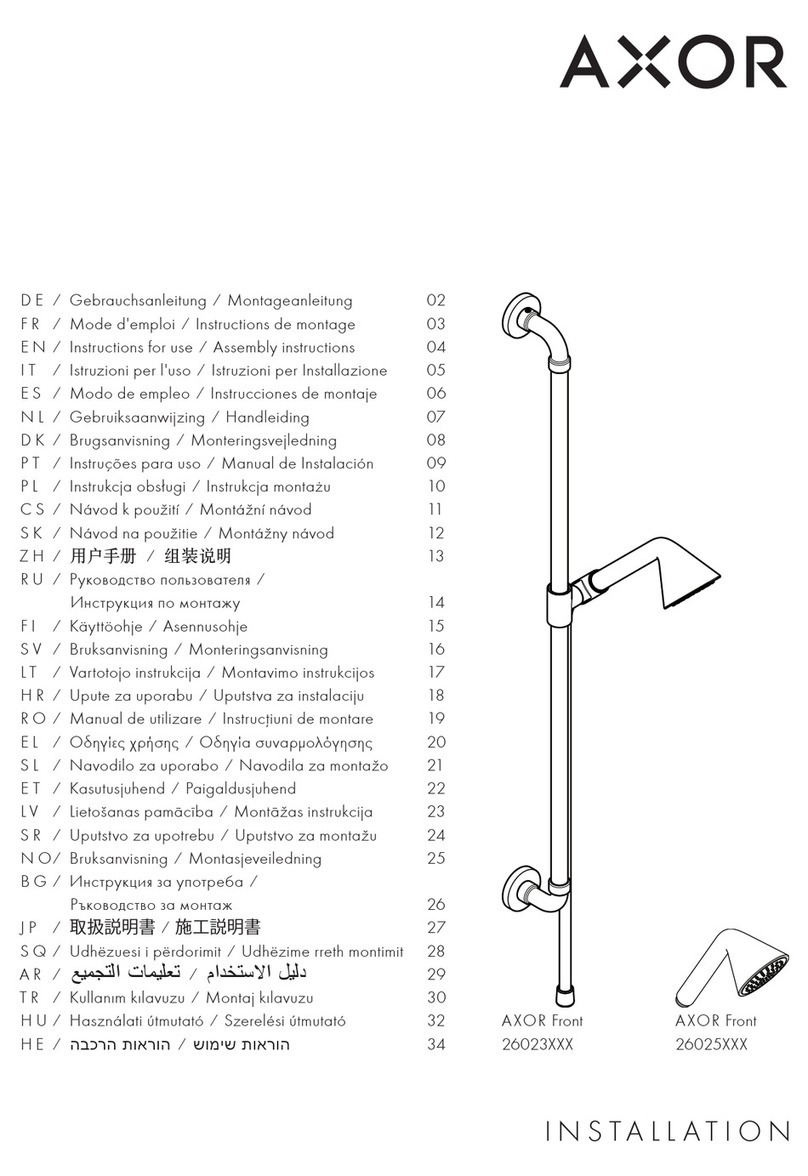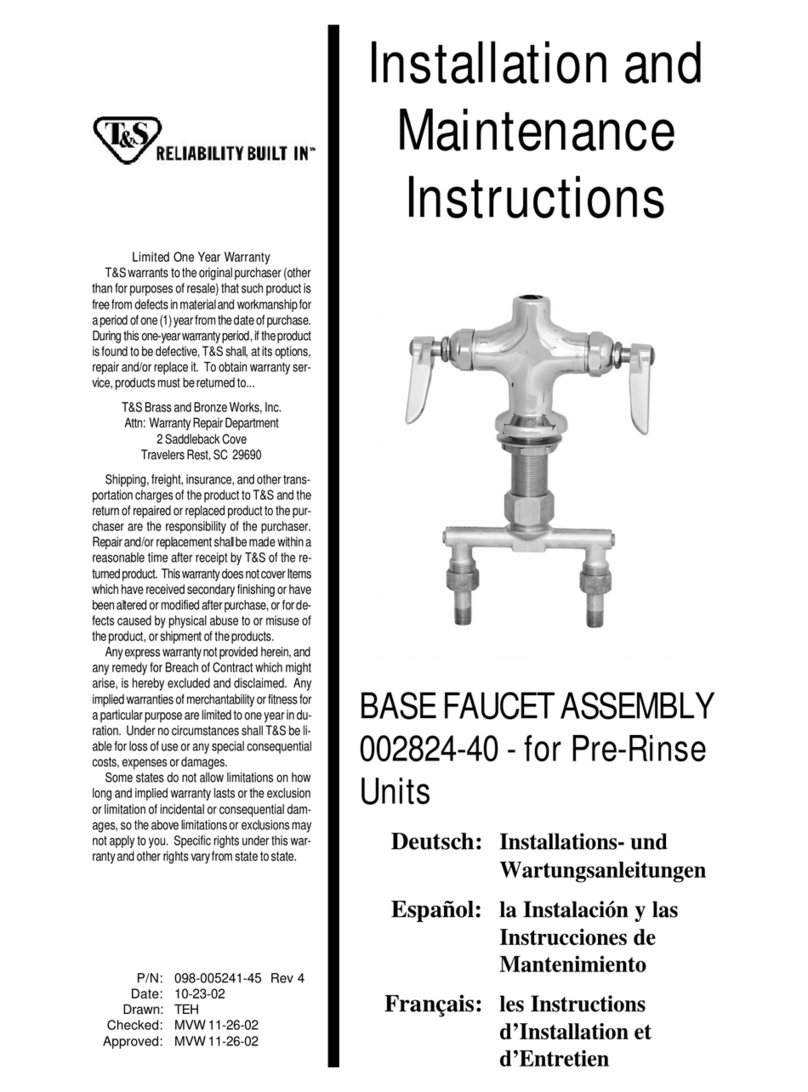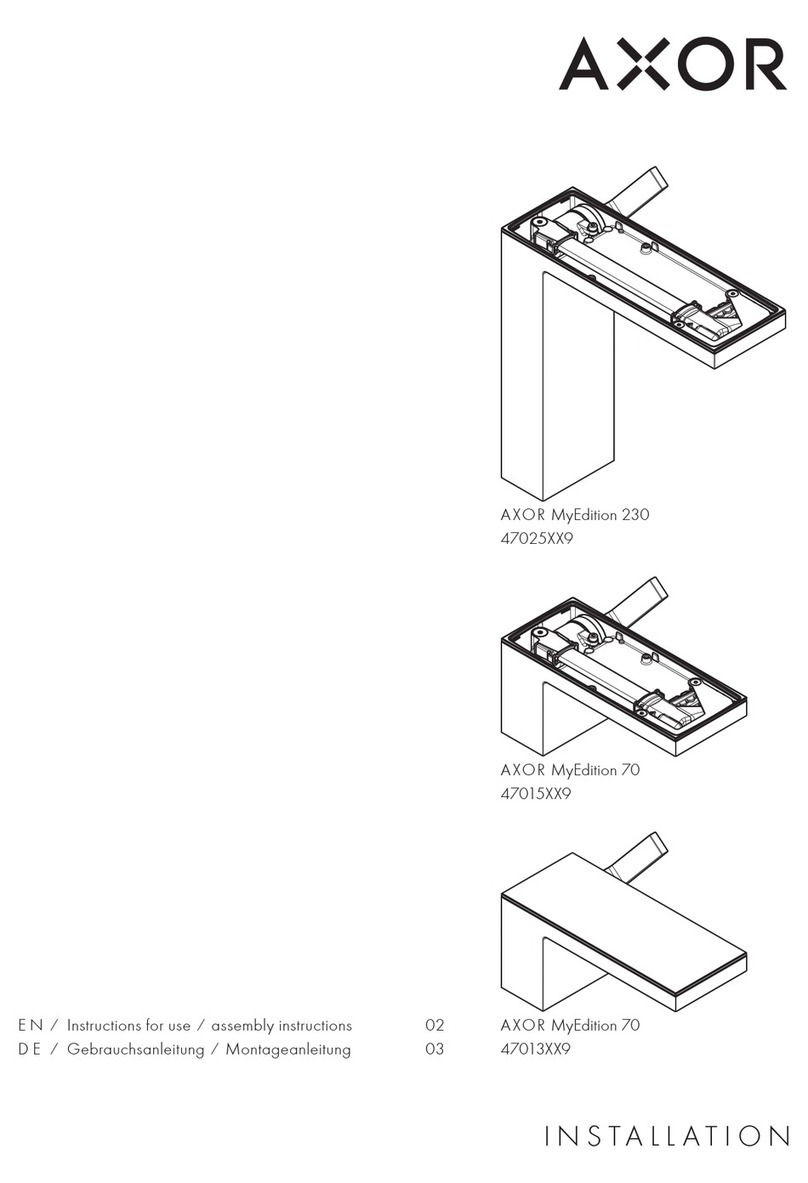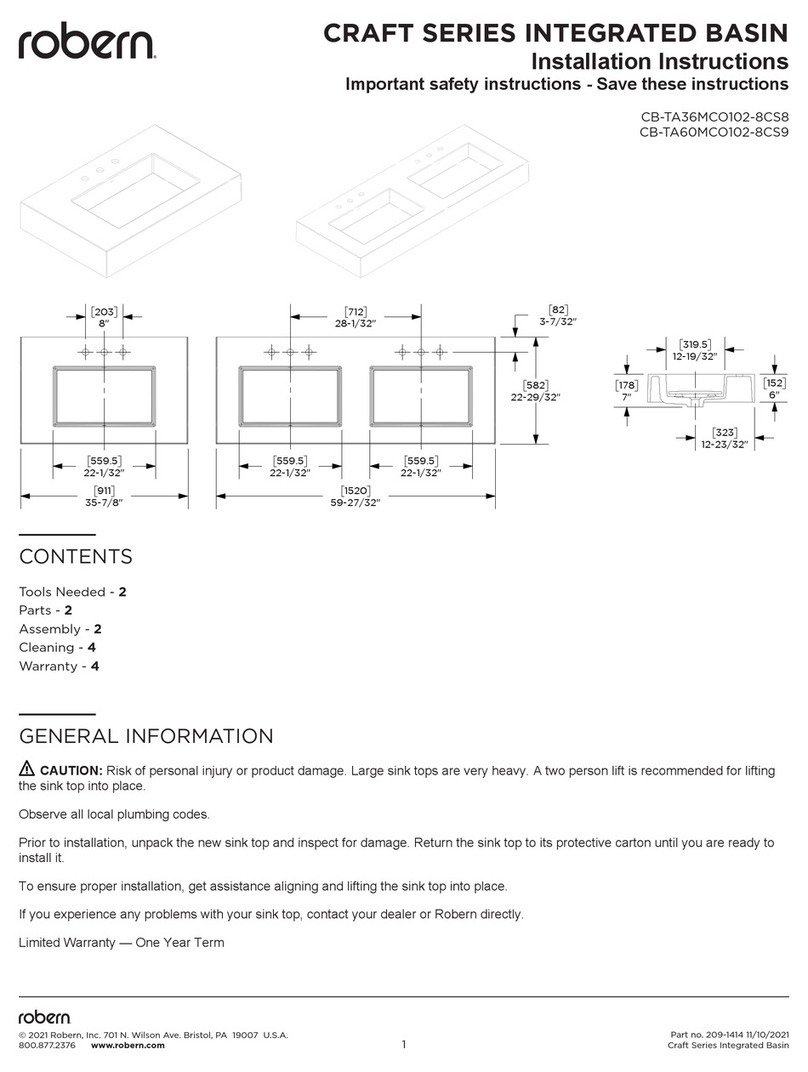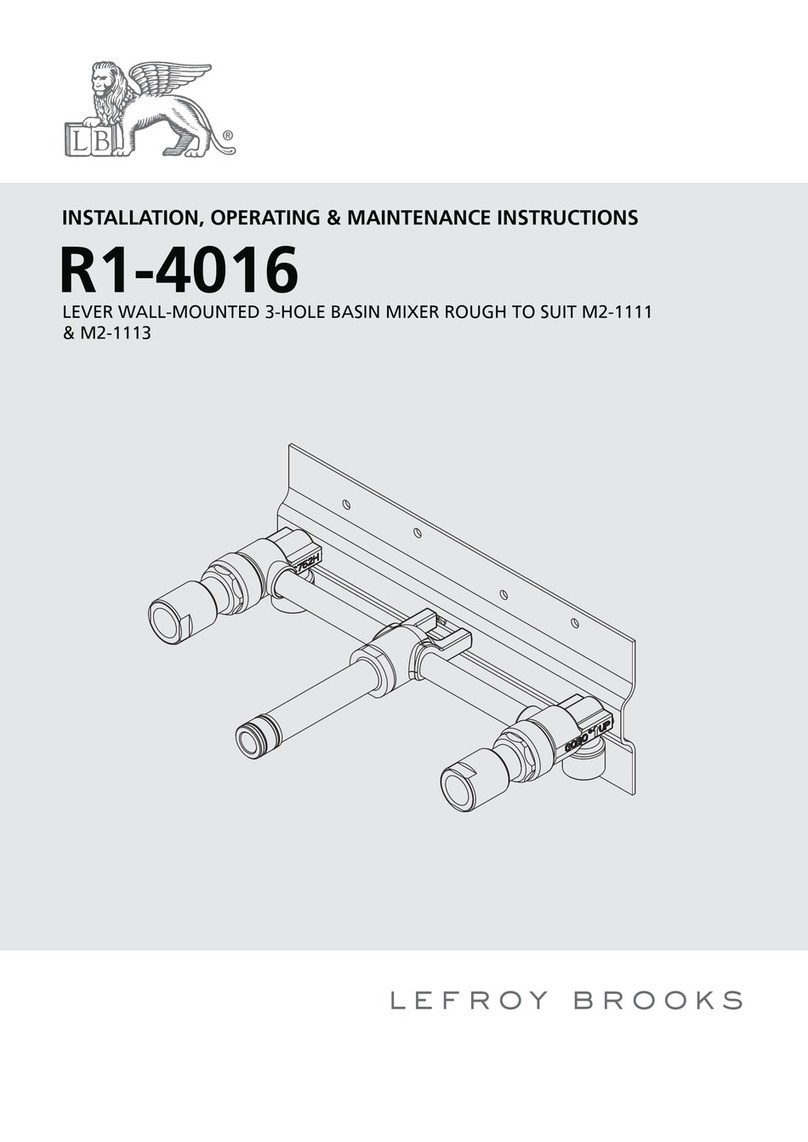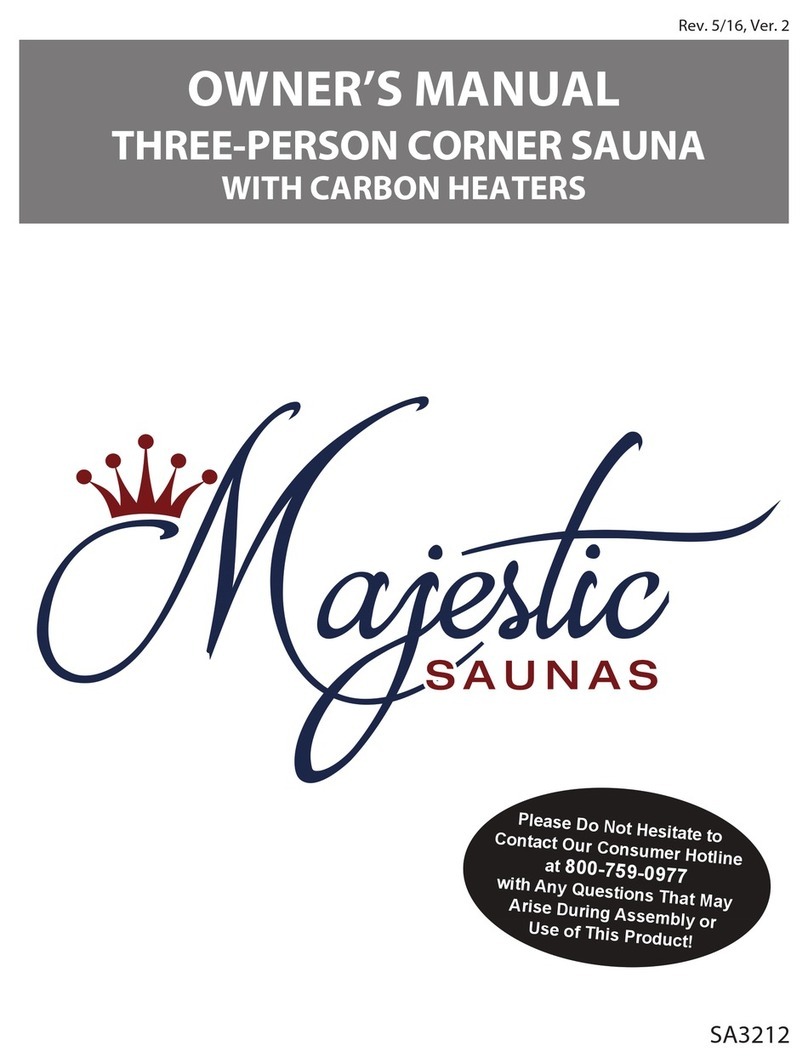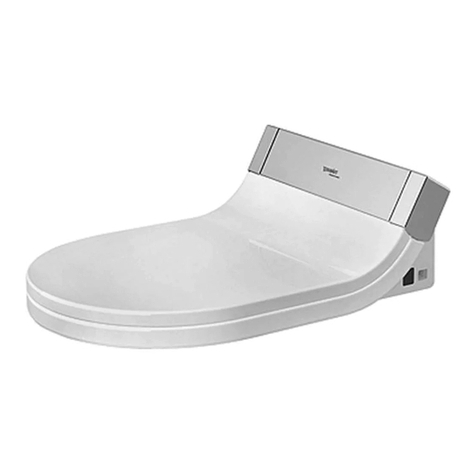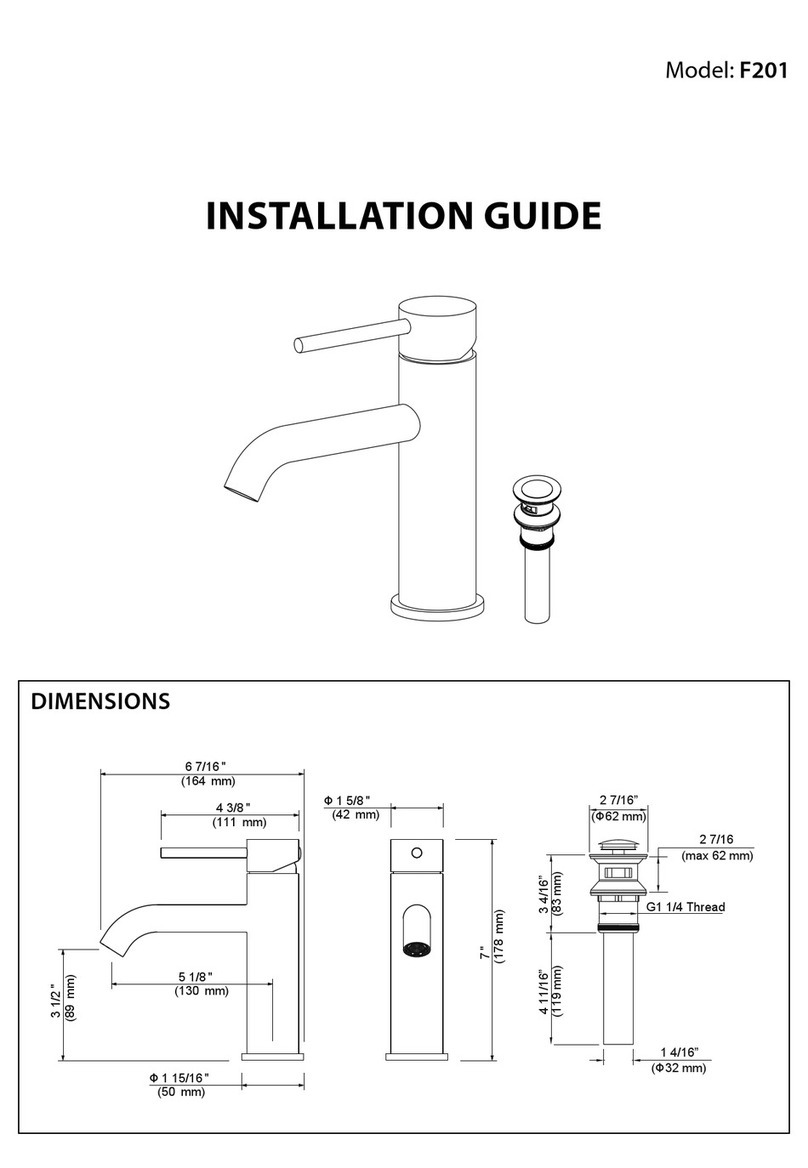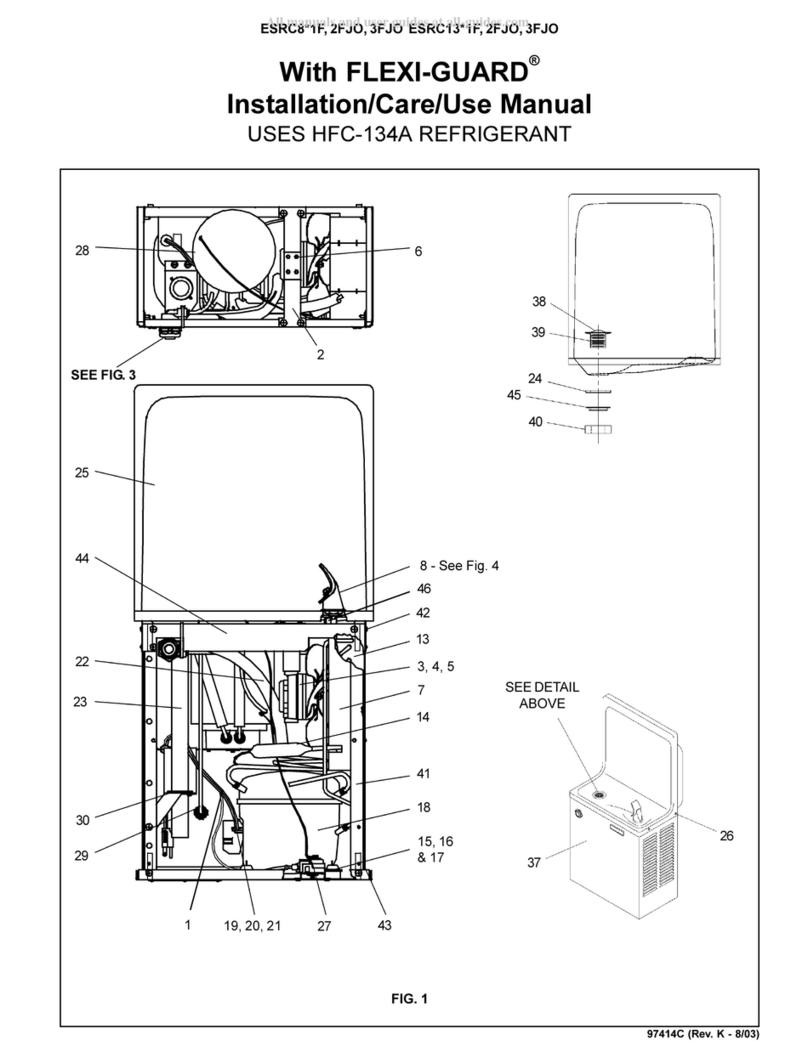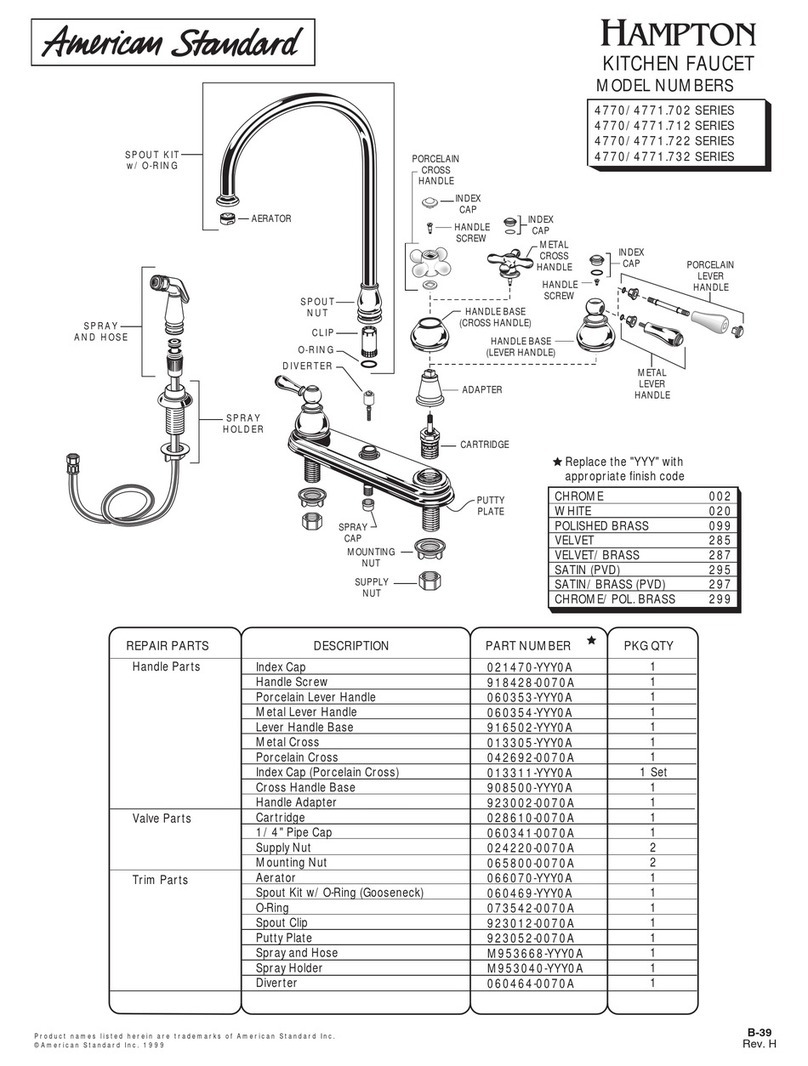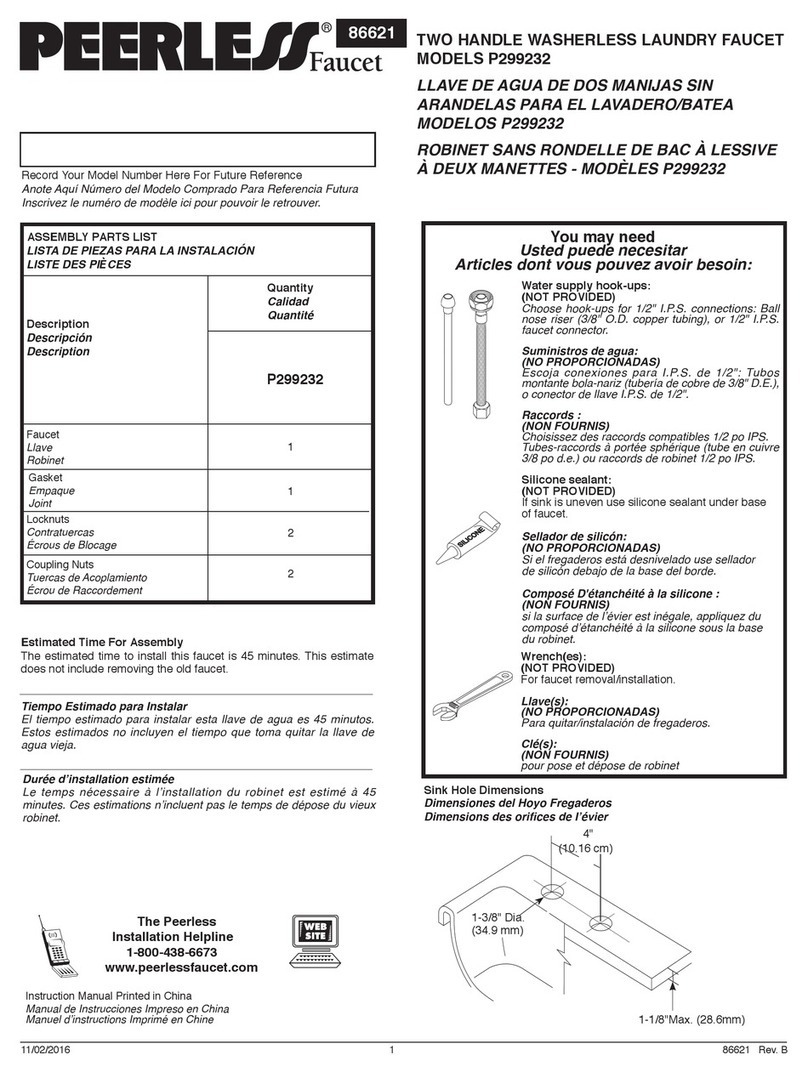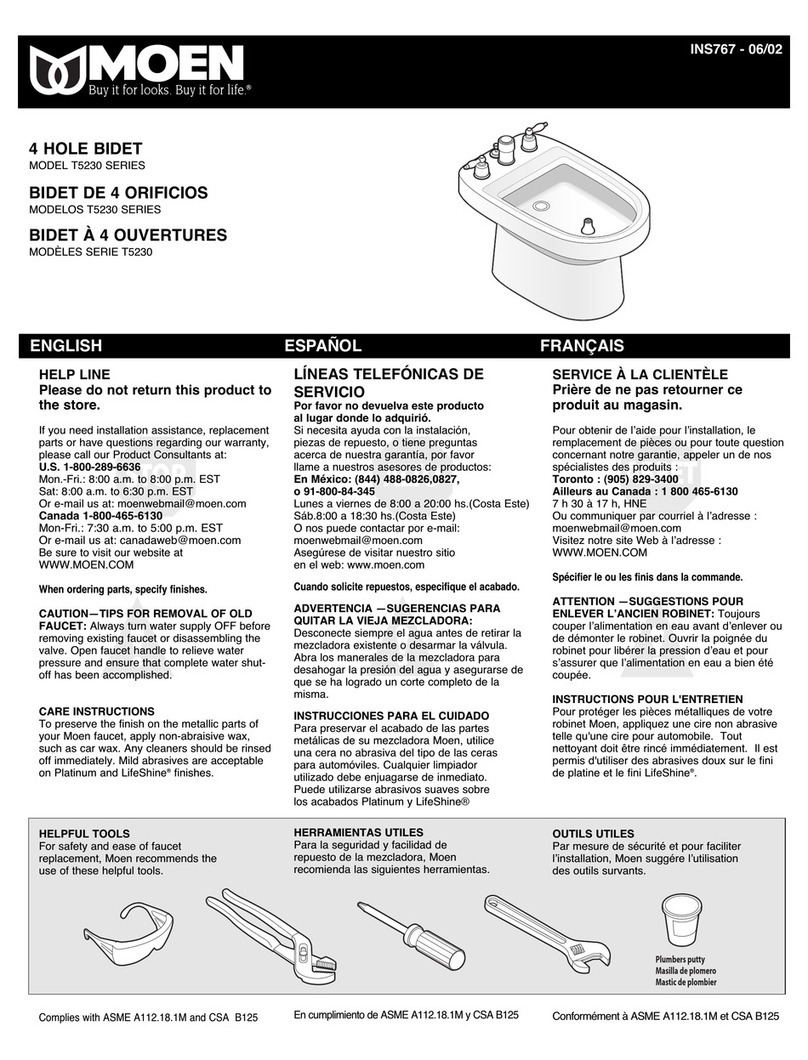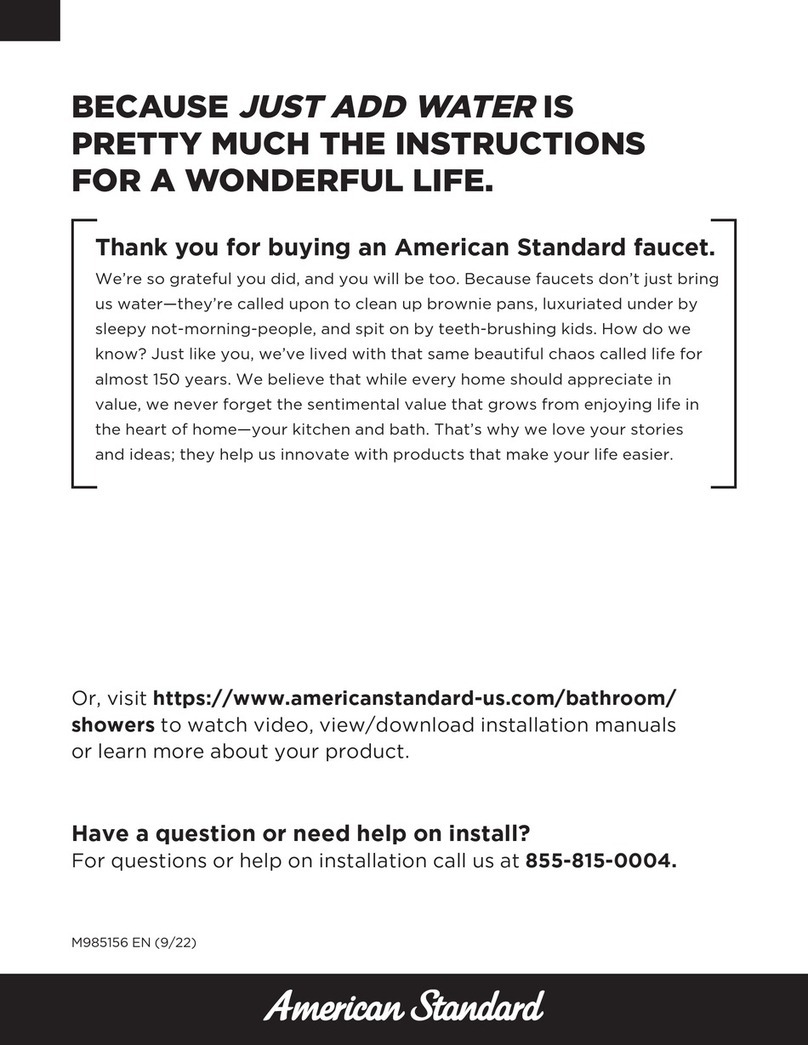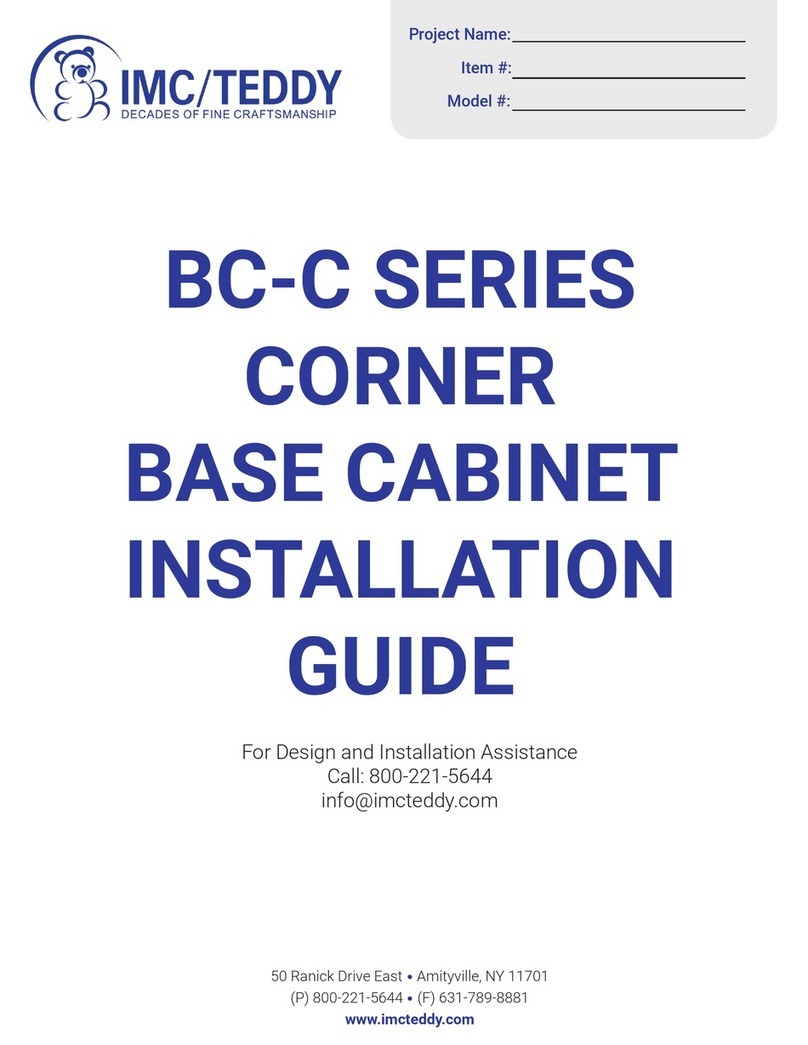
10
Warranty:
Product is guaranteed against defect in workmanship
and material for a period of one year from date of
shipment, provided such defects are do not result
from abuse, unreasonable usage or other conditions
beyond IMC’s control. IMC’s liability shall not exceed
the cost of material furnished.
Easy Cleaning Instructions:
Rinsing is the most important part of care. Stainless
steel will retain its original bright appearance if
the product is rinsed thoroughly after each use.
“Thorough” rinsing can be done by running the water
throughout the product for a few minutes after
each use. Typically, a rinse and towel drying after
each use takes care of most everyday cleanups. For
everyday cleaning we recommend using Stainless
Steel Cleaners + Polishers. The non-abrasive formula
is safe and effective for day to day cleaning. Your
product will shine like new!
Recommendations for Proper Maintenance:
Use only a mild liquid dish-washing detergent with a
soft sponge to clean and then thoroughly rinse the
product. Rinse thoroughly after each use. “Thorough”
rinsing can be done by running water for a few
minutes and rubbing the cleaned area with a sponge.
Towel dry after each use to prevent mineral deposits
from building up on the surface of the product.
•Do Not allow liquid soap or other household
cleansers to dry on the surface. Most brands contain
chemical additives which will affect the original nish.
•Do Not use solutions of chlorine bleach and water.
Chlorides, which are found in most soaps, detergents,
bleaches, and cleansers, are very aggressive to
stainless steel. If left on the surface too long they can
cause surface pitting.
•Do Not use a steel wool pad to clean. Steel wool
pads have a tendency to break apart and small
particles of steel can become embedded in the
surface of the product. The steel particles will rust
and will give the appearance that the product itself is
rusting.
•Do Not use abrasive cleansers or abrasive pads as it
will scratch the surface.
•Do Not leave wet sponges, cloths, or cleaning
pads on the product. This can lead to surface rust.
Following these recommendations for the care and
cleaning of your stainless steel product will insure
that it will provide you with many years of service.
Chlorides:
Today, chlorides are found in most all soap,
detergents, bleaches and cleansers; chlorides can be
oppressive to stainless steel. However, chlorides are
very water soluble. Therefore, THOROUGH RINSING
of your product after each use to remove any chloride
residue and a weekly scouring is all that is required to
keep your product looking bright and shiny.
Water Quality:
The quality of your water can affect your product’s
appearance. If your water has a high iron content, a
brown surface stain can form on the product giving
the appearance of rust. Additionally, in areas with a
high concentration of minerals, or with over-softened
water, a white lm may develop on the product. To
combat these problems, we suggest that the product
be towel dried after use.
Discoloration, Rust and Possible Pitting:
Wet sponges, cloths, cleaning pads and rubber mats
left on the product can lead to discoloration. Steel
wool pads should never be used to clean your product
as they leave small iron particles in the grain lines
which rust and can damage the product. Continued
usage in this manner may eventually lead to the
product itself rusting and pitting.
Liquid Soap:
Do not allow concentrated liquid detergent to dry on
your product. Most brands contain chemical additives
which will affect the original nish.
Spotting:
The quality of your water can affect your product’s
appearance. In areas with hard water, a brown
surface stain can form on the product giving the
appearance of rust. This also occurs in water with
high iron content. Additionally, in areas with a high
concentration of minerals, or with over-softened
water, a white lm may develop on the product. To
combat this problem, we suggest that the product be
towel dried after use.
Foods:
Heavy salt concentration or foods containing high
levels of salt should not be allowed to dry onto the
surface. Rinse your product thoroughly after use.
For more in-depth maintenance & care guidelines,
visit these resources:
IMC/Teddy Tips NAFEM Tips













